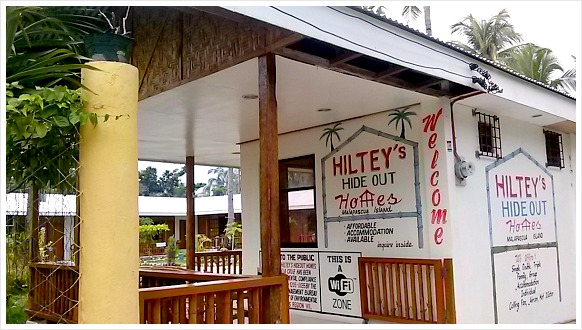Mandaue City
mandaue city
 Cebu Westown Lagoon in Mandaue City
Cebu Westown Lagoon in Mandaue Citymandaue city, cebu province
Mandaue City is a high-income and urbanized city in the Province of Cebu. It is the second biggest city in the province that offers economic, social and leisure opportunities.
Mandaue is part of Cebu Metropolitan area and located in the Central-Eastern coastal region of Cebu. Mactan Island’s Northeast part borders the Southwest coast of Mandaue.
Mandaue City is in between Cebu City and Mactan Island, where Lapu-Lapu City is located. From Cebu City, you can easily take a Jeepney to get there in around 30 minutes.
From Mactan Island, where the domestic and international airports are located, has bridges that link Mandaue (and Cebu).
Mandaue City has over three hundred thousand residents, and over half of it are eligible voters based on the 2016 electoral roll (Wikipedia).
The northern part of Mandaue has rugged hills, while the central part has flat land where 14 barangays comprised the total land area of over 60 percent. The other barangays are in the coastal areas.
Mandaue was made a chartered city in 1969 and was recognized as a highly urbanized city only in 1991. There have been many construction activities going on including the North Reclamation Project, road widening and repair works, construction of new buildings, and the creation of subdivisions and housing projects.
barangays of mandaue city
Mandaue City is composed of 27 barangays to date.
Alang-alang, Banilad, Basak, Cabancalan, Cambaro, Canduman, Casili, Casuntingan, Centro, Cubacub, Guizo, Ibabao-Istancia, Jagoblao, Labogon, Looc, Maguikay, Mantuyong, Opoa, Pagsabungan, Paknaan, Subangdako, Tabok, Tawason, Tingub, Tipolo, Umapad
economic features
Mandaue City is home to most of the Province’s domestic industrial and commercial businesses. Factories for various products (packages, furniture, etc.) and retail establishments abound the city area.
Among the big local companies, you can find the famous San Miguel Corporation, Coca-Cola Bottling Corporation, and Shemberg.
It is estimated that about 40 percent of Cebu’s export companies are established in Mandaue due to its environment for business and strategic area. It hosts over ten thousand industrial and commercial establishments.
Mandaue is known as the furniture center of the country exporting around 75 percent of the country’s furniture products.
Okay, if you are here searching for attractions and travel destinations for excitement or relaxation, let me mention some of them below.
attractions & travel destinations in mandaue
So that you will find it easier to find your favorite activity, let me categorize them according to their functions.
- Nature attractions
Butuanon River, Casili Hills, Cabancalan-Banilad Sinkholes, Cansaga Bay, Jagobiao Spring, Mahiga River, Monkey Caves
- Historical Sites:
Bantayan Sa Hari, Batahn Press, Eversley Childs Sanitarium, Cebu International Convention Center, Mandaue Presidencia, City Hall, Mandaue Salt Beds, National Shrine of Saint Joseph, Ouano Wharf, Rainbow Lane, Rizal-Bonifacio Memorial Library, San Miguel Brewery,
- Museums:
Luis Cabrera Ancestral House and Museum, Mandaue City Public Library, Quijano Museum, 856 G Gallery
- Public Parks:
Bridge Park, City Plaza, Garden Center
- Sports Centers & Facilities:
Aboitiz Sports Field, Cebu Golf Academy, Mandaue City Sports and Cultural Complex, Mandaue Tennis Complex, Portside Badminton Plaza, Sacred Heart - Ateneo de Cebu Sports Complex, San Roque Football Club, Quick Points Badminton Club, Wireless Plaza and Sports Complex
 Kiddie pool at Cebu Westown Lagoon and Hotel
Kiddie pool at Cebu Westown Lagoon and Hotelreligious fiestas
Being influenced by Spain’s religious tradition, Mandaue’s local folks still are celebrating such influences through festivals. Here are the events they annually celebrate…
Mandaue Fiesta. It is celebrated to honor their patron saint - Saint Joseph, every May 8 through colorful dances and various sort of competitions open to the public.
Panagtagbo. Mandaue celebrates Saint Joseph the meeting of the patron saints of Cebu - Santo Nino and Birhen sa Guadalupe (Baby Jesus and Virgin Mary of Guadalupe respectively). This celebration is called ‘Translacion’ - meaning, the gathering of the Holy Family.
Kabayo (Caballo) Festival. It is a horse-racing activity which is annually held in the second week of February
Pasigarbo sa Sugbo. It is an event usually held at Mandaue’s International Convention Center every August 13 that shows colorful presentations from the 42 towns and cities of Cebu Province.
local food & international cuisine
As a highly urbanized city, Mandaue offers varied food products in many places including the restaurants, cafes, street vendors, department store eateries, etc.
If you are into local food, let me name some of Mandaue’s favorites:
Bibingka (rice cake), Lechon (barbecued whole pig), inasal, Achara, sinugba (baboy [pork], manok [chicken], baka [beef], puso (diamond-shaped hanging rice), kinilaw (raw fish mixed with ingredients), buwad (dried fish or squid), dinuguan, etc.
Aside from the local food and cuisines, you can easily find international food at specific places or international restaurants serving various cuisines. You can taste menus of Italian, Japanese, Indian, Mediterranean, Western, Lebanese, Arabic, Russian, Korean, Chinese, Mexican, Thai, Vietnamese and more cuisines.
 Crispy Rools
Crispy Roolsgetting in and out of mandaue city
Going to Mandaue City is very accessible from various points of departure. It has good road network connecting to many every destination in the province. It has a national road, city road, and barangay road.
Most regular commuters take the PUJ (jeepney), mini-buses, multi-cabs, tricycles, and trisikads. Others use their private vehicles (car or motorbikes) to get around the area or when going to work.
The city uses the Port of Cebu and Cebu International Port when delivering their cargoes for export through ships. Of course, you can get to Mandaue City through Mactan's Cebu-Mactan International Airport.
Thank you for reading.
Have a fine day!
Return to Cebu Municipality Page from Mandaue City
Return to Cebu Bluewaters Home from Mandaue City
Book Your Activity Here...
Please Like, Share...
Leave Messages...
|
|
Book & confirm your hotel room quickly and safely with Agoda Company. Agoda uses a state-of-the-art technology when processing your transaction online. Traveling Cebu is Agoda's official partner for eight years now. Find now your hotel here or below.



